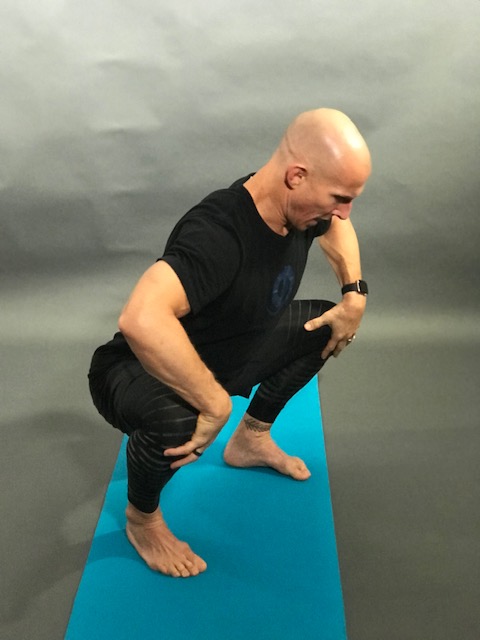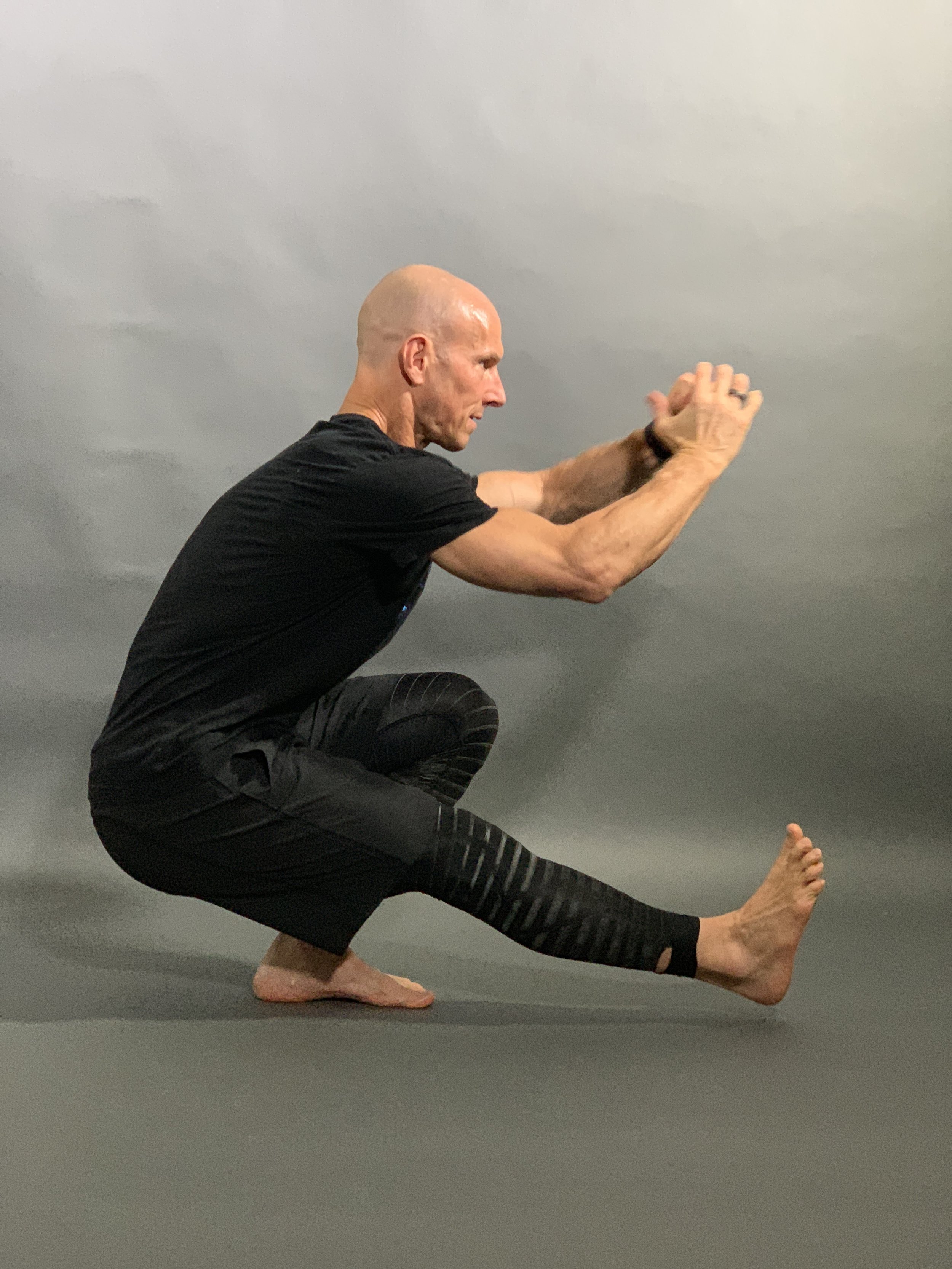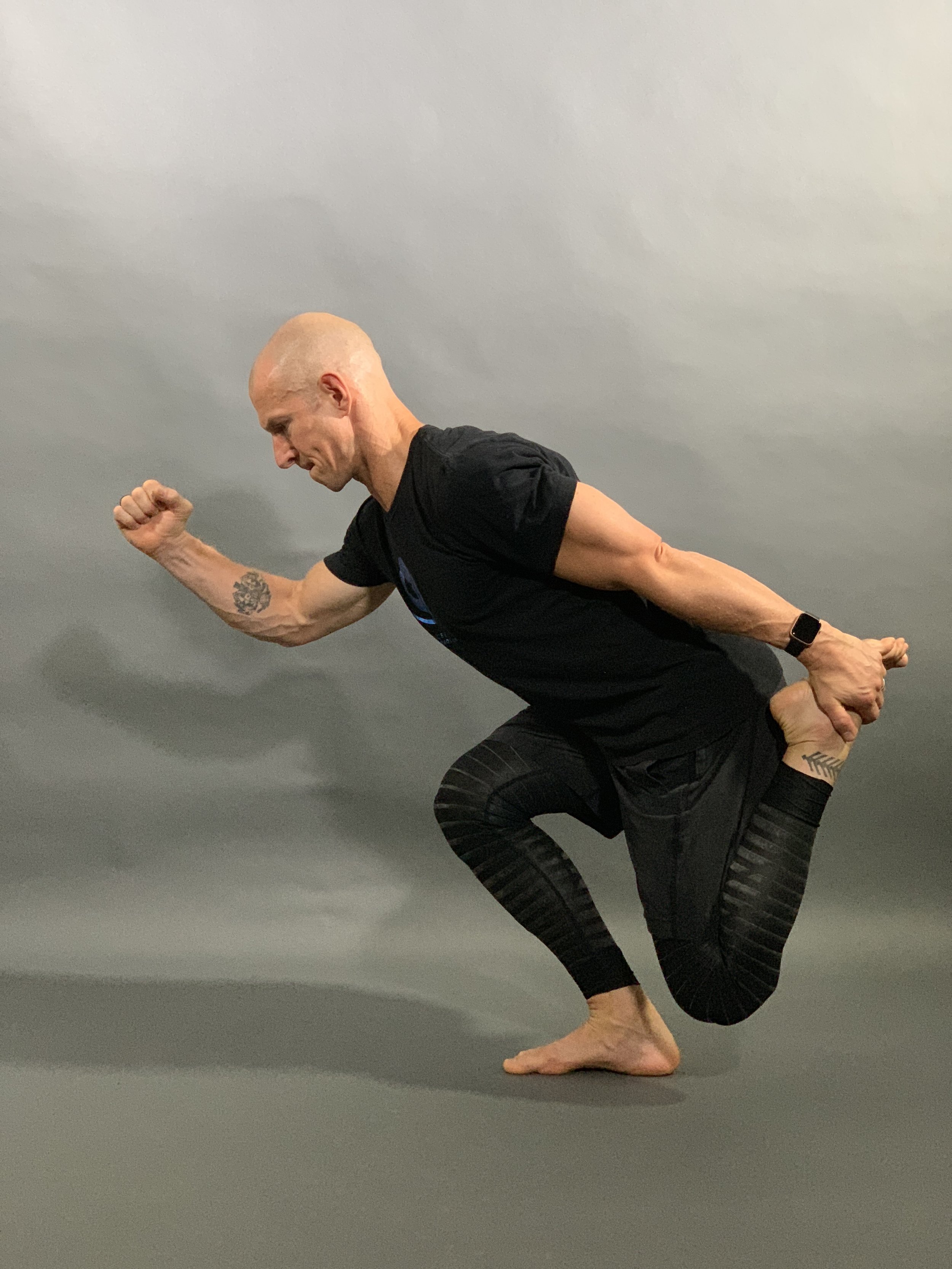THE exercise you need to know to feel young forever.
Basic Body Weight Squat
The SQUAT. Yes, the squat. It is arguably the most basic and fundamental exercise every human being on this planet should re-learn how to do regardless of age.* Because it engages more muscle then virtually any other exercise, it is the backbone of health and mobility. While it is not a complicated exercise, it has to be done properly in order for one to a) reap its full benefits and b) avoid injury.
*Side notes: 1. RE-learn because children instinctively know how to squat perfectly. 2. The next equally important exercise we’ll talk about is the dead-lift.
Why is the squat so important?
You need to be able to squat for just about everything you do - to sit down and stand up, to pick things up off the floor, to use the bathroom, even walking up stairs is a series of modified squats. You get the idea. And, these are only examples of partial squats. Ideally, you want to be able to perform a powerful and full squat with some sense of ease. Consider a fall. A powerful squat increases the ability to prevent an impending fall and to move quickly out of the way of incoming and sudden danger. Power also exhibits a strong neuromuscular connection and practicing powerful squats is a great way to maintain that connection. Without this explosive element, you no longer can be completely autonomous and the potential for injury goes up exponentially. Should you actually fall, being able to comfortably squat fully, meaning, butt to calves, will enable you to get up unassisted.
The inability to squat means you have restricted mobility throughout your entire body. Without a proper squat you really lack the strength to traverse the earth. In fact, there was a study conducted in 2012 correlating the ability to stand up off the ground unassisted with longevity, and it makes sense.
It’s important to keep in mind that there are about 100,000 ways to squat - maybe more - as long as you have healthy knee and hip joints. The more ways you can squat the better. The basic squat is a good place to start. Master this, before you move on.
BASIC SQUAT BREAKDOWN
Toes: Keep them pointed straight ahead or slightly turned out.
Feet: They should be hip to shoulder width apart. The tighter you are, the wider your feet will need to be.
Torso: Maintain upright posture. Pay attention to your ribs. Don’t let them pop out.
Weight: Center your weight throughout your feet. Keep your heels down. Imagine you are inside a tight cylinder and avoid bowing your head forward (so as to avoid hitting the walls of the cylinder).
Butt to calves. Actively pull yourself down into the squat. Your hips will shift back a bit. Your tailbone reaches to a target just behind your heels. Your knees stay in alignment with the toes, but track forward as far as needed in order to pull down into the deepest squat possible without losing your balance.
To come out of the squat, imagine you are in that tight cylinder again and keep your torso upright. As you press the floor away with your feet, your hips and torso come up at the same speed. Imagine you are shooting out of the floor like a rocket.
TIPS
Make a fist with one hand in front of you at chest height and squeeze it tightly with the other hand. Pull your shoulder blades down so you are engaging your lats. Squeeze your arms to your sides as if you were holding something under your armpits.
Corkscrew your feet into the floor and/or spread the floor away with your feet.
WHAT MAY BE GETTING IN THE WAY OF YOUR SQUAT?
Lack of hip mobility, tight ankles and/or a tight back.
WHAT CAN REMEDY THIS?
The more you practice, the better you will get. Practice squatting more and sitting in a squat for longer periods of time. Sit in the squat position for as long as you can and while down there, explore different positions. Try rocking forward and back, and rotating from side to side. This may feel uncomfortable at first and this is totally ok, just don’t go into pain. Focusing on deep breathing can help. Inhale for 4 counts and on the exhale let the air strongly release.
Use props to help you such as a TRX, door knob, kettlebell, column or a person to counterbalance your weight to help pull yourself deeper into a squat.
Tiny Fencer. Image courtesy of Daily Burn.
Try this exercise. I call it the Tiny Fencer. Kneeling on an exercise mat, step one foot out to the side with your knee bent, toes facing out and heel in line with the opposite knee. Open your arms out on a diagonal and press your forearm into the inner thigh of the inner thigh. Keeping your turned out foot flat on the floor, bend the knee of the leg that is turned out as you press your hips forward and reach your arms out as long as possible. Allow the knee to extend past the toe to feel the stretch in your hip flexors, inner thighs, calf muscles while increasing your ankle mobility. Hold for a few seconds, then practice rocking from side to side. Repeat on the other side.
Practice doing some powerful squats intermittently throughout the day. Do 10-20 jump squats every 30-60 minutes.
Ready for more? Who says you need equipment or added weight? Try these first!
3 ADVANCED BODY WEIGHT SQUATS
The Pistol
This is essentially a one-legged squat with the non-working leg straight out in front of the body. Extend one leg in front of you, lower down slowly with control and balance until your butt is on your heels. Push into the floor to powerfully stand back up. In addition to leg strength, before you can do a pistol, you need to be able to do a full, deep squat. You’ll need mobility in your hips, feet and ankles, and good balance. (Image 1 above)
The Sissy Squat
This type of squat helps to build quadriceps strength. Standing on both feet, keep your torso in a diagonal line with your knees as you bring your knees forward and shoulders back. Drop your knees down to the ground as you push up on the balls of your feet. (Image 2 above)
The Shrimp Squat
This is another single-leg bodyweight squat requiring tons of strength, flexibility and balance. Bend the knee of the non-squatting leg behind your back (as if you were stretching your quadriceps) and hold that ankle with your hand. Slowly and with control, lower your body until your knee touches the ground, then stand back up. Keep your weight balanced in the middle of your foot as you squat up and down. (Image 3 above)
Need some help with your squat? Is limited mobility, flexibility or stability getting in the way of living a pain-free life? Work with us.
Want a taste of a deep functional mobility and breathing class? Join us at Limelight Fitness in NYC this Sunday, November 11 at 1:30. Details and sign up here.
(Full disclosure: There are some affiliate links above. While we make a little bit of money if you make a purchase using our links, it is at no extra cost to you. Rest assured, we honestly wouldn't be recommending them if we didn't believe in them)!








